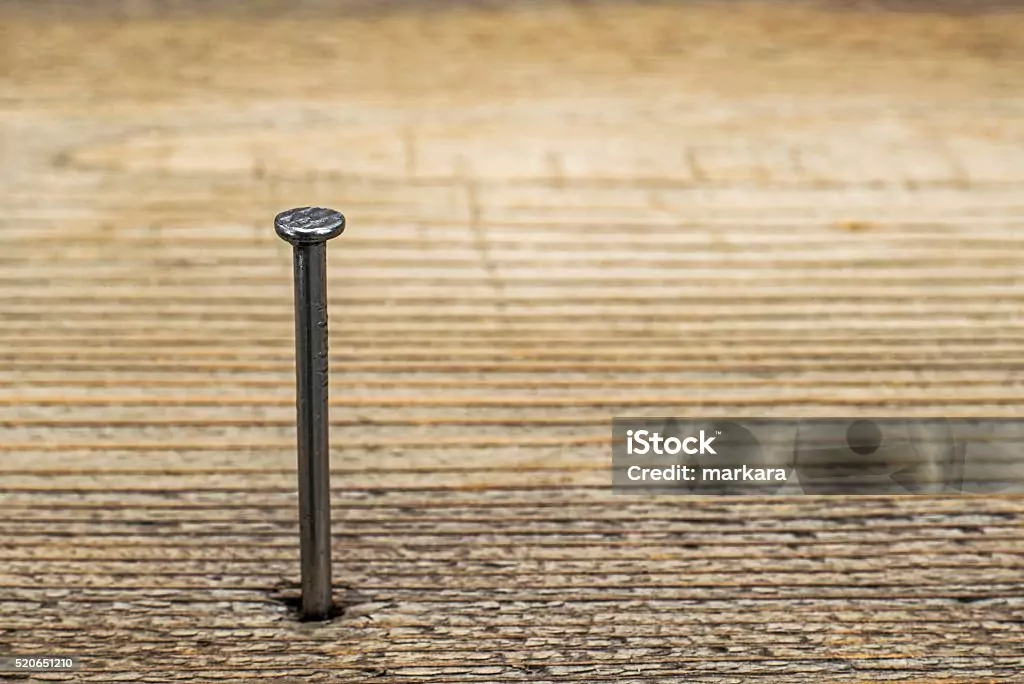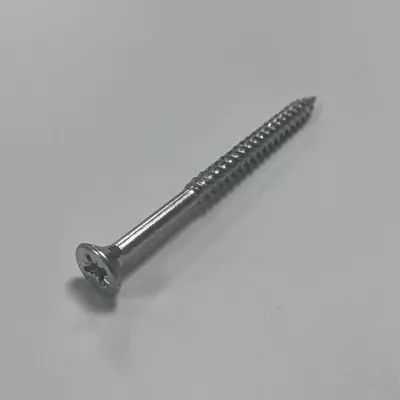caTEGORIES
Tags
Exploring Woodscrews Types and Their Applications in Woodworking

Posted: September 12, 2024
Categories: News
Woodscrews are essential fasteners in woodworking, serving various purposes from joining pieces of wood to providing structural support. Selecting the right woodscrew can significantly affect the quality and durability of a woodworking project. Understanding the various types of woodscrews and their specific applications will help woodworkers avoid common pitfalls and enhance their craftsmanship. This article will explore the types of woodscrews available, and factors to consider when selecting them and highlight the popular options provided by Qewit, a reliable source for high-quality woodscrews.
Understanding Different Types of Woodscrews
Flat Head Woodscrews
Flat-head woodscrews feature a flat top and a countersunk design, allowing them to sit flush with the surface of the wood. This type of screw is advantageous in applications where a smooth finish is desired. Flat head screws are commonly used in cabinetry, furniture assembly, and other woodworking projects where aesthetics and safety are paramount.
Round Head Woodscrews
Round-head woodscrews have a domed head that does not countersink into the wood, making them a good choice for projects where visibility and easy access are necessary. These screws provide excellent grip and alignment but may require additional finishing to conceal them. Woodworkers often utilize roundhead woodscrews in structural applications or any project where quick assembly and disassembly are needed.
Oval Head Woodscrews
Oval head woodscrews combine features of both flat and round head screws, offering a mulled design that enhances the visual appeal when used in exposed applications. They serve well in decorative projects, such as crafting and building custom furniture. The oval head allows for a slightly elevated finish while providing a good grip on various materials.
Countersunk Woodscrews
Countersunk woodscrews are designed for use in pre-drilled pilot holes that taper into the screw head. This design allows for a flush finish while maximizing surface area for a secure hold. These screws are ideal for wood projects where aesthetic considerations are prominent. They can be used in various woodworking applications, including flooring, cabinetry, and aerodynamic designs.
Selecting the Right Woodscrew for Your Woodworking Project
Factors to Consider When Choosing a Woodscrew
When selecting the appropriate woodscrew for a project, various factors must be considered to ensure optimal performance.
Material Compatibility
It’s crucial to choose woodscrews made of materials compatible with the type of wood being used. Different woods have varying hardness and density which can affect how well different types of screws perform. For instance, hardwoods may require specialized screws that maintain integrity and avoid stripping, whereas softwoods might allow for a broader range of choices.
Length and Diameter Requirements
The length and diameter of the woodscrew are other significant aspects to consider. A screw that is too short may not provide sufficient holding power, while an overly long screw can split the wood or cause other structural integrity issues. It’s recommended to match these dimensions closely with the thickness of the materials being joined and the design requirements of the project.
Thread Type and Pitch
The thread type and pitch are essential in determining how a woodscrew will perform in different materials. For example, coarse threads are effective in softwoods and substrates while fine threads work well in hardwoods. Understanding thread characteristics ensures that woodworkers choose an appropriate screw for their specific applications, improving the overall quality of their work.
Popular Qewit Woodscrews for Various Applications
When considering the right woodscrews, Qewit offers a comprehensive selection that caters to a range of woodworking needs. Qewit’s products are designed with quality materials ensuring durability and reliability. For instance, they provide flat-head woodscrews ideal for cabinetry, round-head options suitable for structural projects, and countersunk woodscrews that offer a sleek finish for decorative work. Choosing Qewit woodscrews not only enhances the aesthetic appeal of projects but also supports their longevity through quality craftsmanship.
In whichever woodworking endeavor one embarks upon, considering the types of woodscrews available, their specific applications, and the parameters of a project leads to better decision-making. Avoiding common mistakes in selecting and utilizing woodscrews is vital for any expert woodworker looking to ensure the safety and integrity of their creations. By turning to trusted suppliers like Qewit, an expert in providing premium woodscrews, woodworkers can take their projects to new heights, achieving excellent results every time.

Proper Usage Techniques for Woodscrews in Woodworking
Pre-Drilling Holes: When and Why It’s Important
Pre-drilling holes is a critical practice that enhances the usability and effectiveness of woodscrews in woodworking. Without pre-drilling, particularly in hardwoods, there is a significant risk of the wood splitting or cracking, compromising the structural integrity of the project. This technique creates a guide, aligning the screw accurately and ensuring it penetrates the wood smoothly. Moreover, it minimizes the amount of torque applied to the wood, allowing for better grip without damaging the surface.
For optimal results, it is advisable to select a drill bit that matches the minor diameter of the screw threads. This will ensure that the threads have sufficient material to secure them while allowing the screw to enter without excessive force. Additionally, the depth of the hole should slightly exceed the length of the screw to prevent any metal from being exposed, which can lead to corrosion if woodscrews are subjected to moisture. Adopting a systematic approach to drilling will lead to cleaner, more precise, and more durable wood joins.
Ensuring Stability and Tightness
Stability and tightness are essential considerations when working with woodscrews. It is vital to ensure that the screw is driven straight and properly secured to maintain joint integrity. A screw that is not aligned correctly can lead to loose joints, impacting the entire construction. It is helpful to use a power screwdriver for consistent torque application and secure fastening. However, care must be taken to avoid over-torquing, which can deform the screw head and strip the surrounding wood.
Properly embedding the screw is also important, as leaving it slightly above the wood surface can be not only unsightly but may also compromise the joint’s stability. Ideally, the screw’s head should sit either flush or slightly below the wood, depending on the application. Assessing the resistance while driving the screw will give feedback, indicating whether it is properly seated or if adjustments are needed. Additionally, utilizing techniques such as wood glue in conjunction with screws can provide further stability, enhancing the overall performance of screws in woodworking applications.
Enhancing Your Woodworking Projects with Qewit’s High-Quality Woodscrews
How Qewit’s Product Line Supports Various Applications
Qewit stands out as a premier provider of woodscrews, offering a diverse range of products designed to meet various woodworking needs. Their extensive product line includes options catering specifically to cabinetry, furniture assembly, and structural tasks, providing artisans with flexibility and reliability. Each screw matches the high standards expected in professional woodworking, delivering consistency in quality across different applications.
The durability of Qewit’s woodscrews means they can withstand varying environmental stresses, ensuring the longevity of the projects they are used in. For example, Qewit offers corrosion-resistant options that are ideal for outdoor applications, safeguarding against weather-related wear and tear. This protective feature allows woodworkers to extend their creativity beyond traditional applications, exploring new possibilities while knowing their craftsmanship will stand the test of time.
Moreover, the smart design of Qewit’s screws, including various head shapes and thread types, ensures they are suitable for a wide range of materials, including softwoods and hardwoods. This flexibility allows woodworkers to customize their projects further, ensuring that they achieve both the desired aesthetics and functionality, aligning with the specific requirements of their woodworking ventures.
Innovative Features of Qewit Woodscrews
Qewit takes pride in the innovative features embedded in their woodscrew designs that enhance their usability and effectiveness. One such feature is the precision-engineered threads, which reduce the risk of stripping and provide excellent holding power in various materials. These threads are specifically designed to minimize friction and increase torque transfer, ensuring that the screws can be driven easily and securely without compromising the surrounding wood.
Additionally, Qewit offers screws with specialized coatings that enhance their performance in different environmental conditions. For instance, some woodscrews are treated for additional rust resistance, making them suitable for outdoor constructions exposed to moisture. This level of consideration for the product’s application speaks to Qewit’s commitment to quality, allowing woodworkers to focus on their artistry without worrying about the durability of their materials.
Furthermore, Qewit continually explores new technologies and materials, introducing products that reflect the evolving demands of the woodworking industry. It can also be customized to your needs Their proactive approach ensures that woodworkers have access to the latest developments in fastener technology, allowing for improved performance and outcomes in a wide array of projects. Incorporating Qewit woodscrews into your woodworking repertoire not only elevates the quality of work produced but also supports the craftsmanship expected from skilled professionals in the field.
By addressing both the common mistakes in selecting and using woodscrews as well as showcasing the multitude of benefits derived from using Qewit products, woodworkers can enhance their projects significantly. Avoiding missteps in the selection process and embracing innovative, high-quality screws will lead to enhanced craftsmanship, satisfying outcomes, and continuing professional development within the woodworking community.



